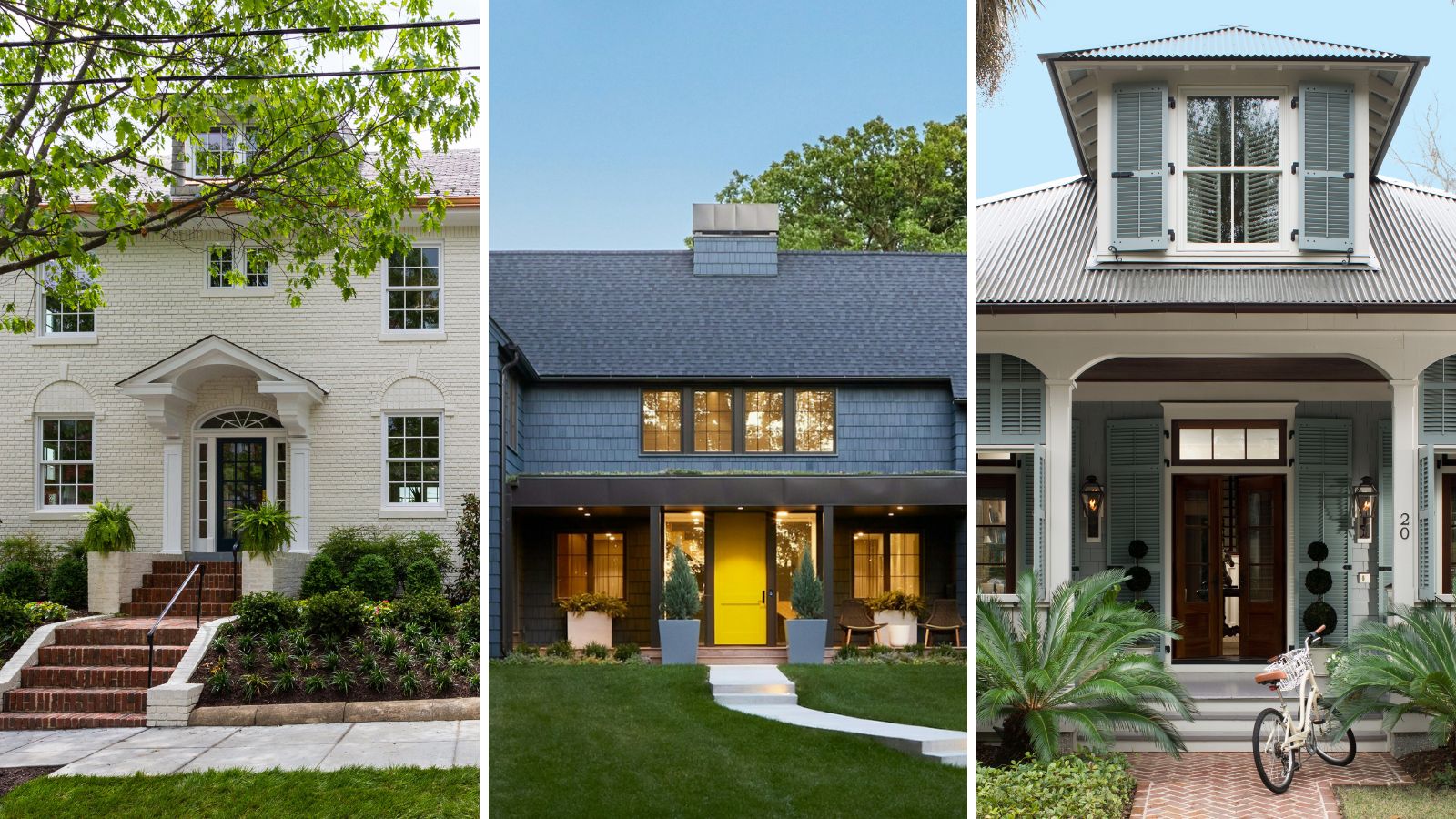
Here at Homes & Gardens we spend a lot of time deliberating over interior color schemes but maybe not quite so many hours considering how to choose a house exterior color scheme.
First impressions are important, however, and we're firm believers in showing the outside of our homes some color love. We've asked architects, interior designers and color experts how they go about choosing a house exterior color scheme for both the front and back of the house.
Between them they've come up with some great exterior paint ideas to boost curb appeal and create a harmonious outdoor space that everyone will appreciate – residents and visitors alike.
How to choose a house exterior color scheme
If you're thinking about how to choose a house exterior color scheme, your first thoughts are probably new paint colors for front doors and windows, or perhaps updating the wall color if the house walls are finished with stucco or clapboard. These are the areas where you can make most dramatic and speedy difference to the house exterior color scheme but they aren't the only options for introducing a new look.
We've got suggestions for creating the illusion of more space, bringing in garden furniture in different shades, or adding new plants and a few pots and containers to give a new look. All these things can improve an outside space but first let's look at how to choose a house exterior color scheme with paint.
1. Select a fresh paint shade
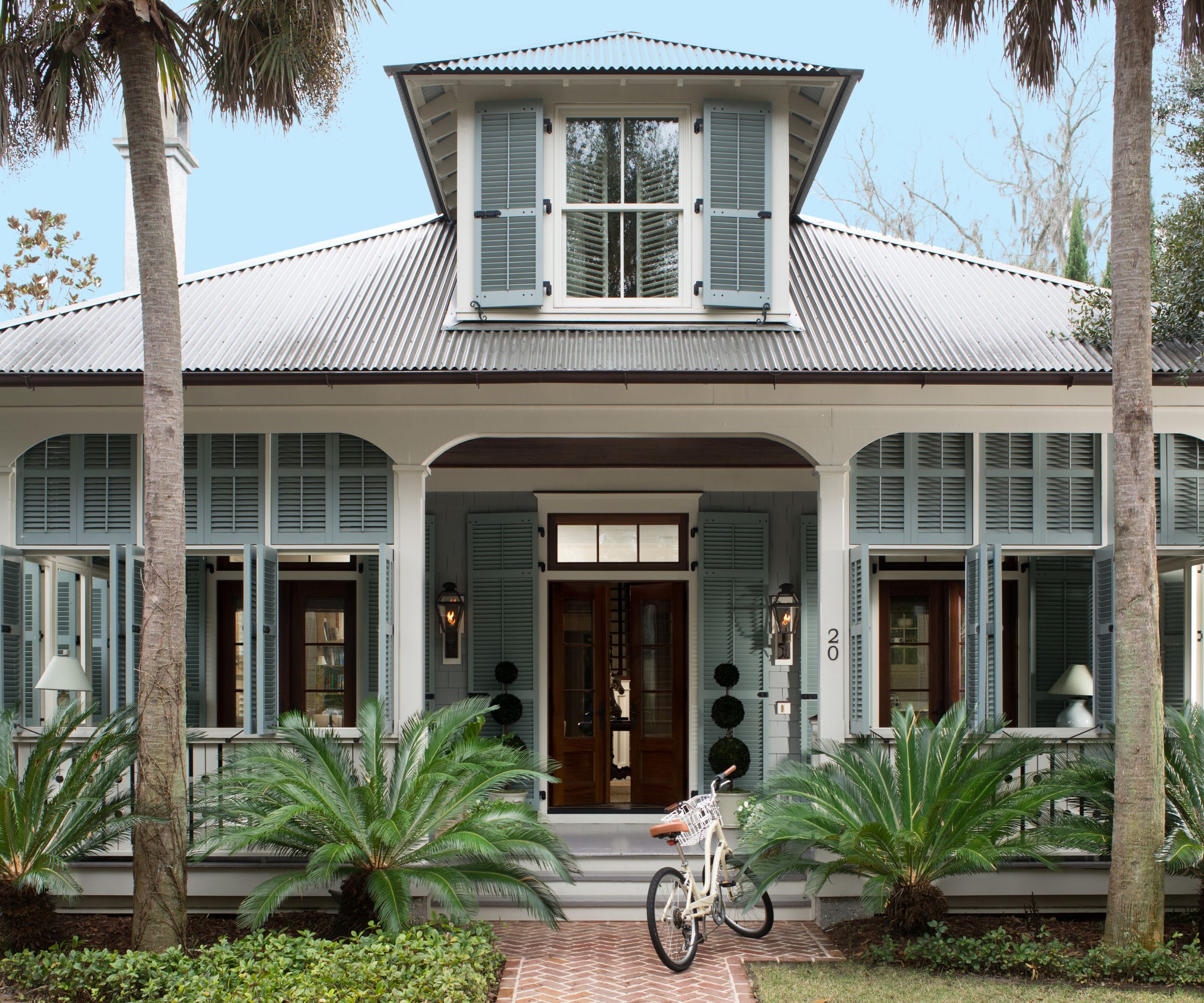
A fresh coat of paint can instantly enhance curb appeal, but with so many appealing paint ideas where do you start?
Hannah Yeo of Benjamin Moore, suggests taking a good look around you before heading to the color display to choose an exterior color scheme. 'Consider the direction of the sun, the amount of light, the surrounding landscape and the climate,' says Hannah.
'For example, if you’re considering the blue color family, observe the shades of the sky or the water around your home. Look for accents in your environment, like bold red geraniums, neutral sandy tones or lush green foliage. Incorporating these colors into your exterior décor can help create a harmonious and inviting color scheme.'
'The shutters surrounding this enclosed porch provide a unique opportunity to add color,' adds Hannah. 'Here, Benjamin Moore's Buxton Blue adds colorful depth to an off-white home. The combination of white and blue creates a charming curb appeal, while the wood ceiling and door trim grounds the space for a classic look.'
2. Add a bright pop of color as an unexpected highlight
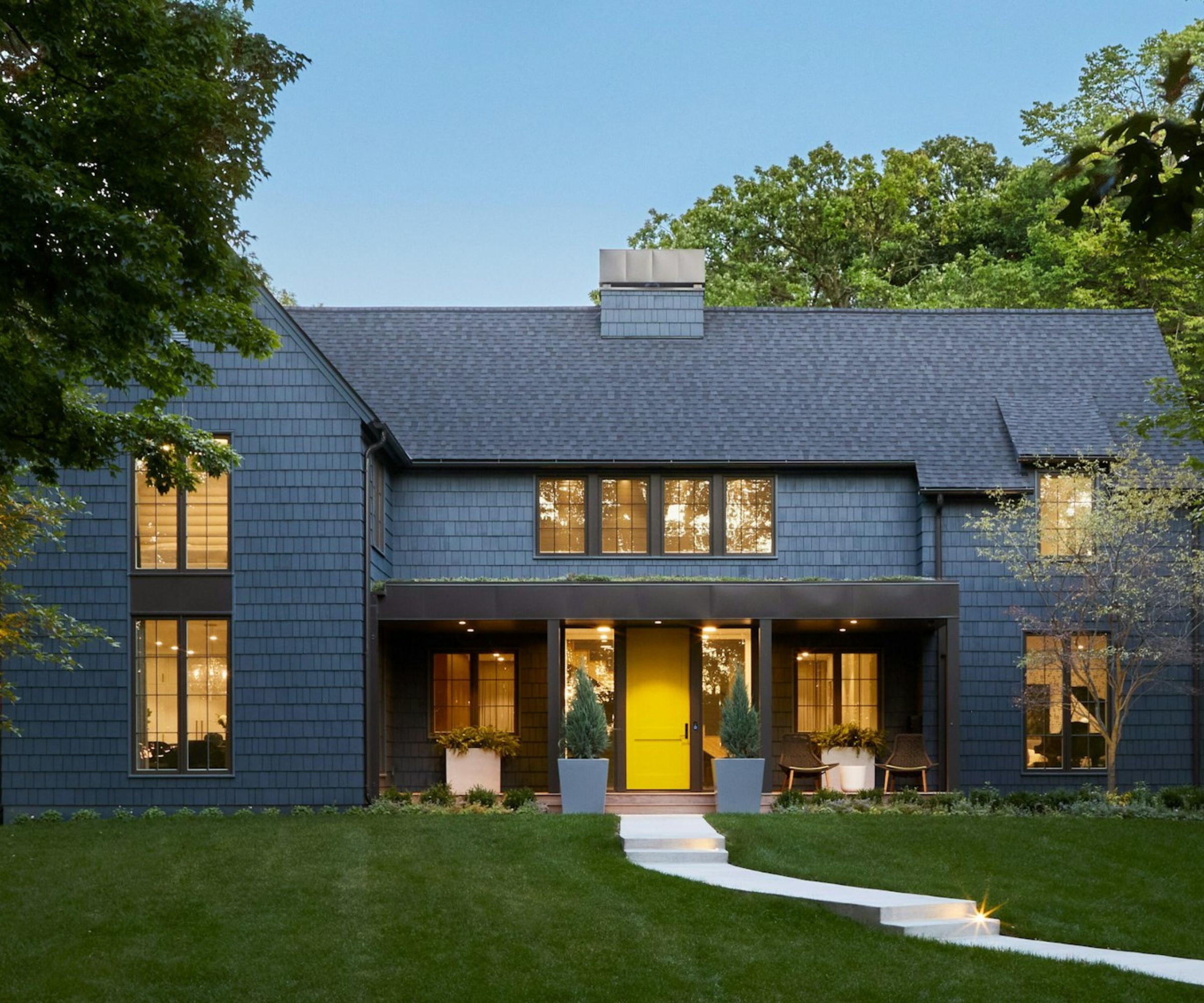
One sure way to make a lasting impression in the neighborhood is with your front door ideas. Using brightly colored paint for the door to contrast with darker, more subdued shades of bricks or weatherboard can be really effective.
'Having a striking presence on the streetscape is what this house does,' explains Kristine Anderson, managing principal and designer for PKA Architecture, the firm that designed and built this home with its distinctive finish. Nestled into a tree-lined boulevard neighborhood and is a balance of clean lines and a modern aesthetic with traditional forms and natural textures.
'The bright yellow front door contrasts with the dark cedar siding. The color theme creates a focus point for those coming to the home, while being playful,' she adds. 'The cedar siding and trim are all the same color, which makes for a clean modern interpretation of a familiar traditional concept of home.'
3. Consider how the home's exterior can be both a disguise and a stand-out feature
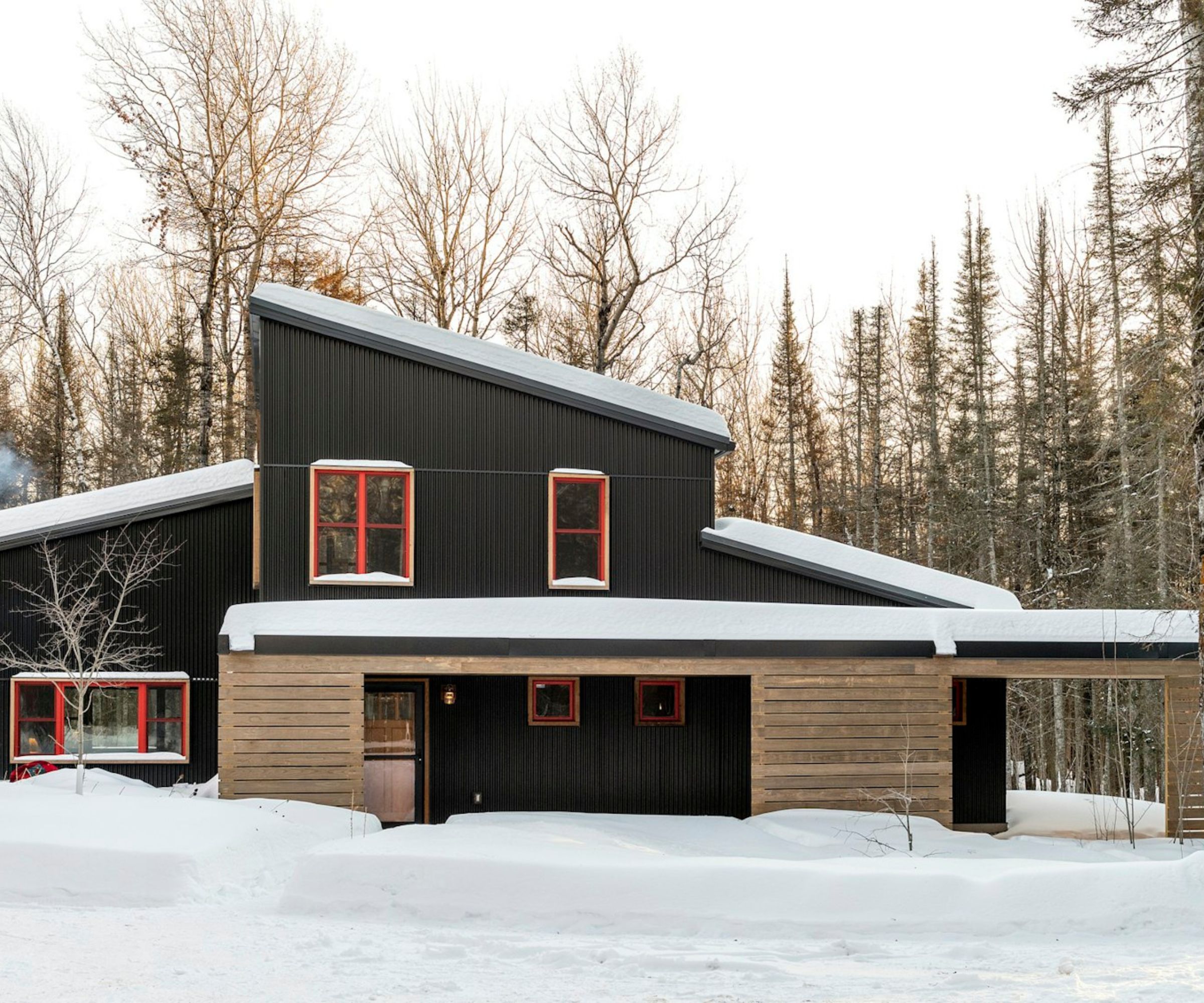
Are you team blend in, or team stand out when it comes to house exteriors? Or maybe a well-balanced mix of the two? If that's the case, we've just found your perfect home in Minnesota's Northwoods region.
In summer the structure of the home blends into the woods while in the winter it will stand out as a feature in the landscape, with its bright red window frames calling out for attention. Kristine Anderson of PKA Architecture explains the concept: 'The Northwoods see a short summer season and a longer snowy season, so a home here can be a disguise and object. The surroundings played a big role in this exterior, as the home intertwined with the landscape.'
'The exterior of the home was about creating something that blends with nature yet can withstand the elements. The exterior is mostly made up of black corrugated metal siding, and Kebony, a thermally modified pine, which trims out the windows, as well as a screening element at the front of the home. The Kebony will eventually silver over time, blending with the woods. As a compliment and to bring some color fun to the exterior, the windows are a poppy red. In the summer, the structures blend away in the deep woods it lives in, and in the winter, they are lovely objects in the snow.'
4. Find balance and harmony with the home's setting for a classic look
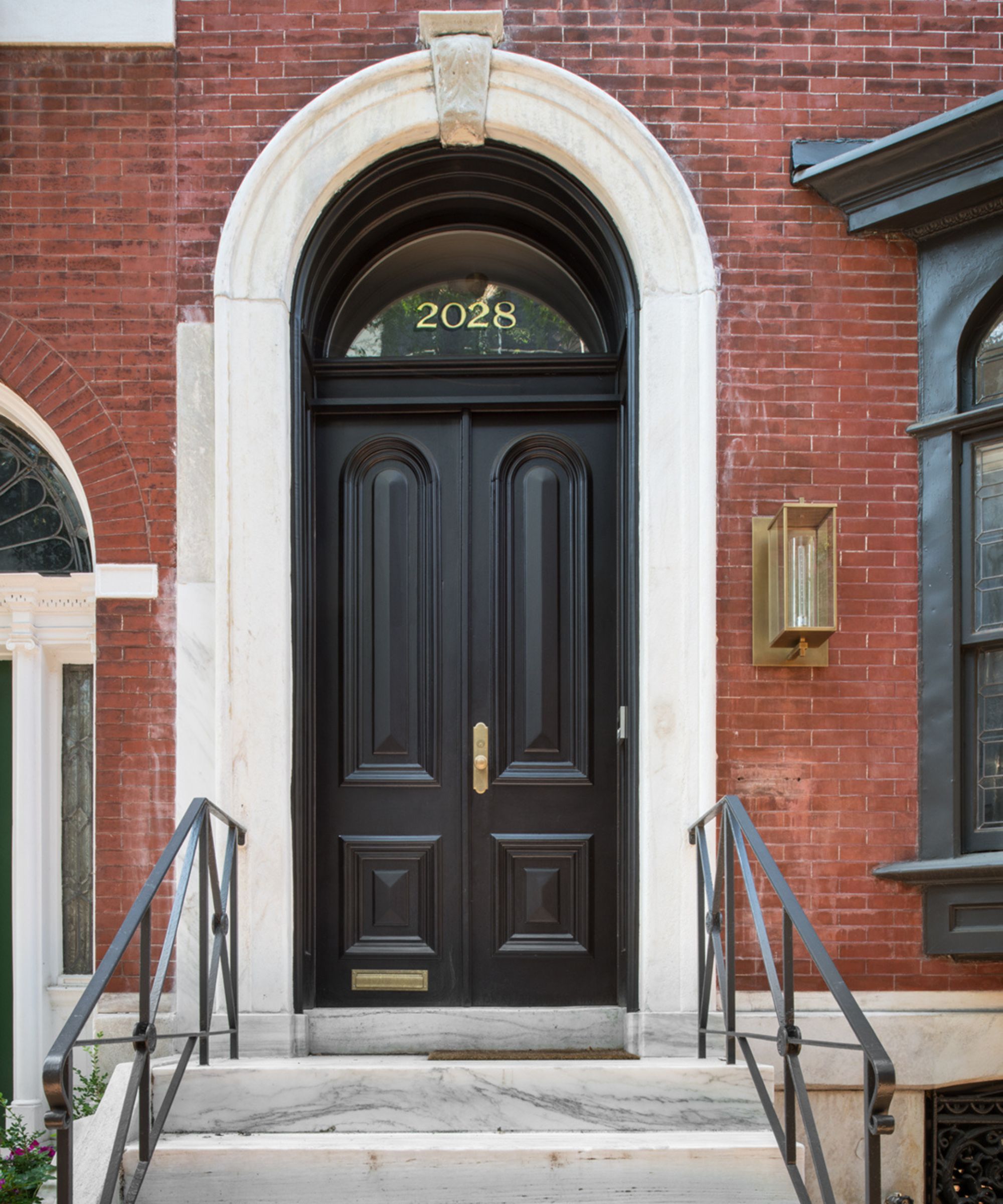
For a more classic, tailored approach to a home's exterior color scheme choose shades and materials that are in keeping with the home's surroundings and its build materials, rather than seeking a bold contrast. Think carefully about front door colors, but also color choices for railings, lighting, door furniture, and stone detailing around doors and windows, as well as the obvious brick colors and door colors.
Kevin Kaminski and Alexis Pew, founders of Philadelphia based architecture and interior design firm Kaminski + Pew say they always start with context when choosing an exterior color scheme.
'If it’s an existing home, what are the materials of the existing building and the neighboring properties? If it’s a new build – is it set in the desert, the forest, city?' says Kevin. 'Our goal is to find balance and harmony with the setting and the overall design. With an informed understanding of the site context we develop the material palate. We often incorporate natural materials, brick, stone, copper, etc, into the design so the material selections from the base of the composition and paint becomes the accent.'
5. Create the illusion of more light and space
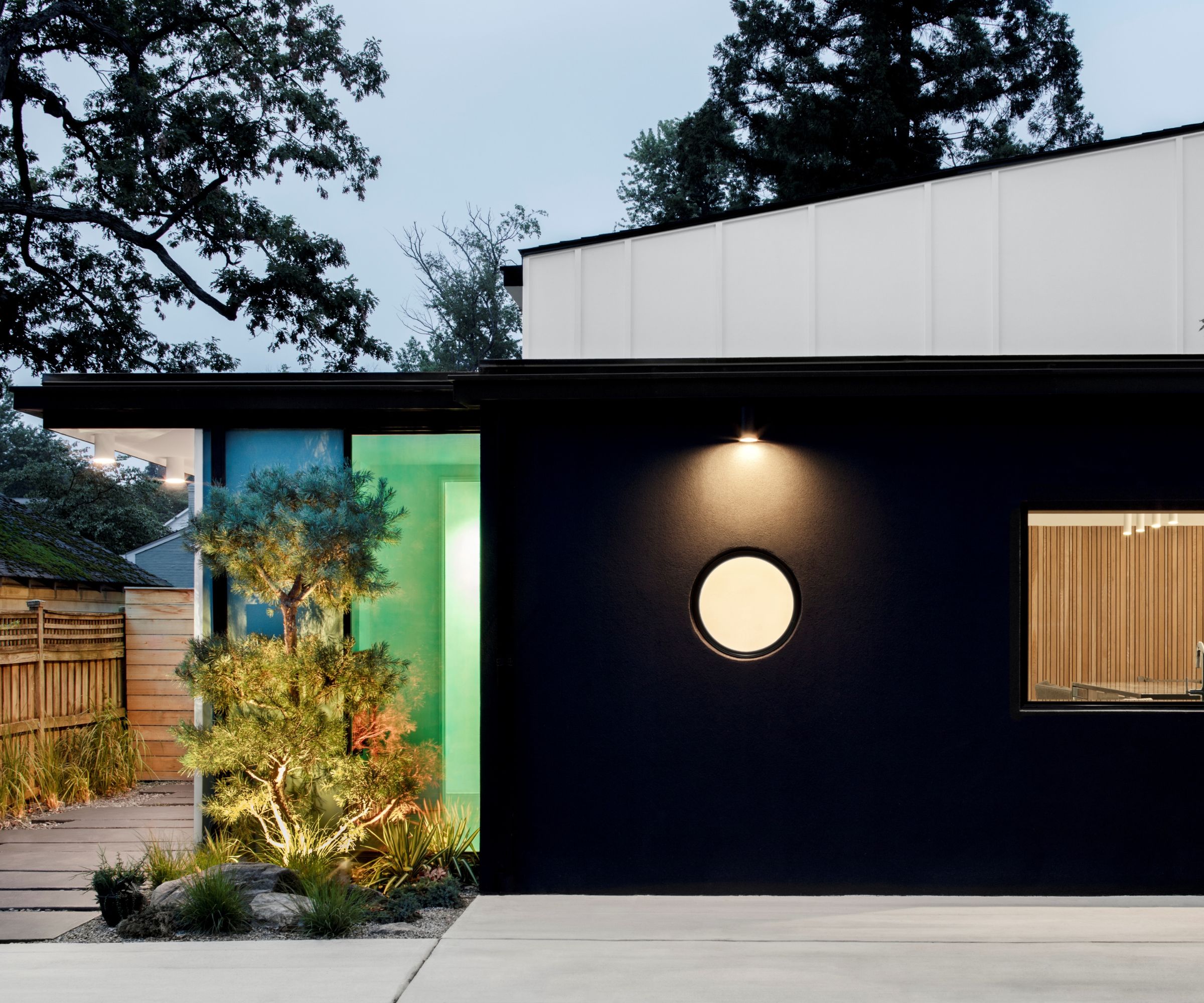
Anyone looking for small backyard ideas and color inspiration for small plots or in outdoor spaces where light levels are lower than optimum, would do well to consider a bespoke approach that harnesses the power of illusion. Using mirrored glass and reflective materials these more challenging sites can be improved and enhanced to produce shape-shifting effects.
Architect Colleen Healey explains how to make this game-changing technique work to your advantage: 'One thing that we have recently incorporated into the exterior is mirrored surfaces and dychroic film on windows (pictured above),' she says. 'If you keep them low and close to flowers or grasses, they can extend the space of the garden or create interesting color-reflecting displays.'
6. Use dark colors and materials to blur the boundaries of manmade and natural landscaping
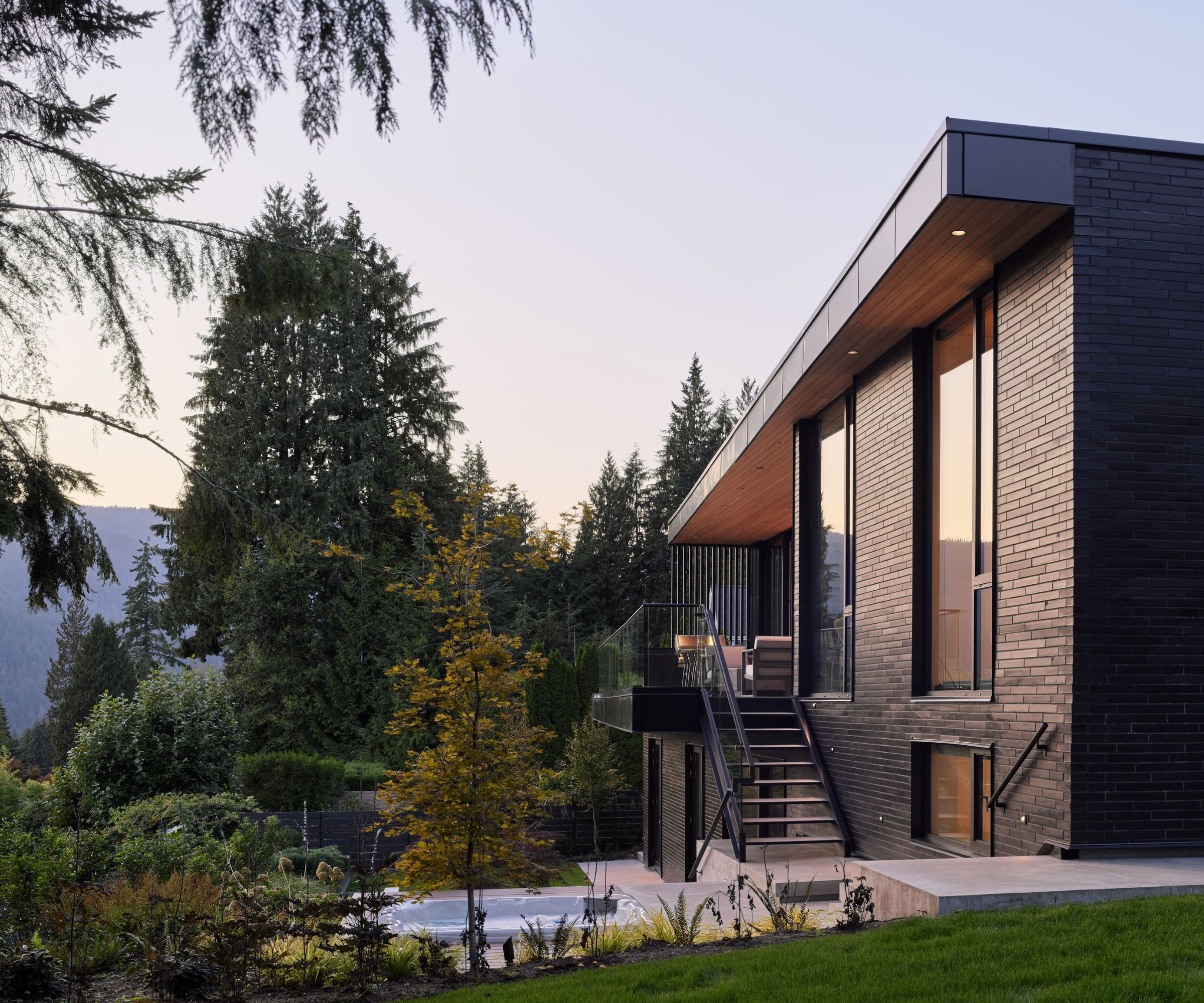
Think black is a solid, harsh color choice for building materials? Think again. In the right context black building materials and color schemes can softly blend into the background allowing the house to fully become part of its setting.
Jesse Basran of BLA Design Group, designed this property in North Vancouver, Canada, and explains why black works so well for the house exterior here.
'The Vista House uses a deep black color scheme that allows it to meld into the surrounding forest, showing how architecture can harmonize with the landscape. The dark hues not only camouflage the house but also highlight the lush greenery around it, making the building seem as if it's a natural extension of the forest.
'This strategic use of color enhances the house's ability to blend with its environment, creating a cohesive look that complements the familiar, earthy tones of the forest and making the house appear almost hidden within the natural setting,' adds Jesse. 'This deliberate choice in dark color and materials ensures that the house does not disrupt the natural landscape but rather complements it.
'By continuing the dark color theme into the garden and hardscaping, the boundary between the manmade and natural environment is blurred, enhancing the perception that the house is tucked away, hidden amongst the trees. This thoughtful extension of the color scheme into the outdoor space further solidifies the house’s discreet presence within its forest setting.'
7. Keep things neutral – and natural – adding smart garden furniture for a relaxed outdoor lounge
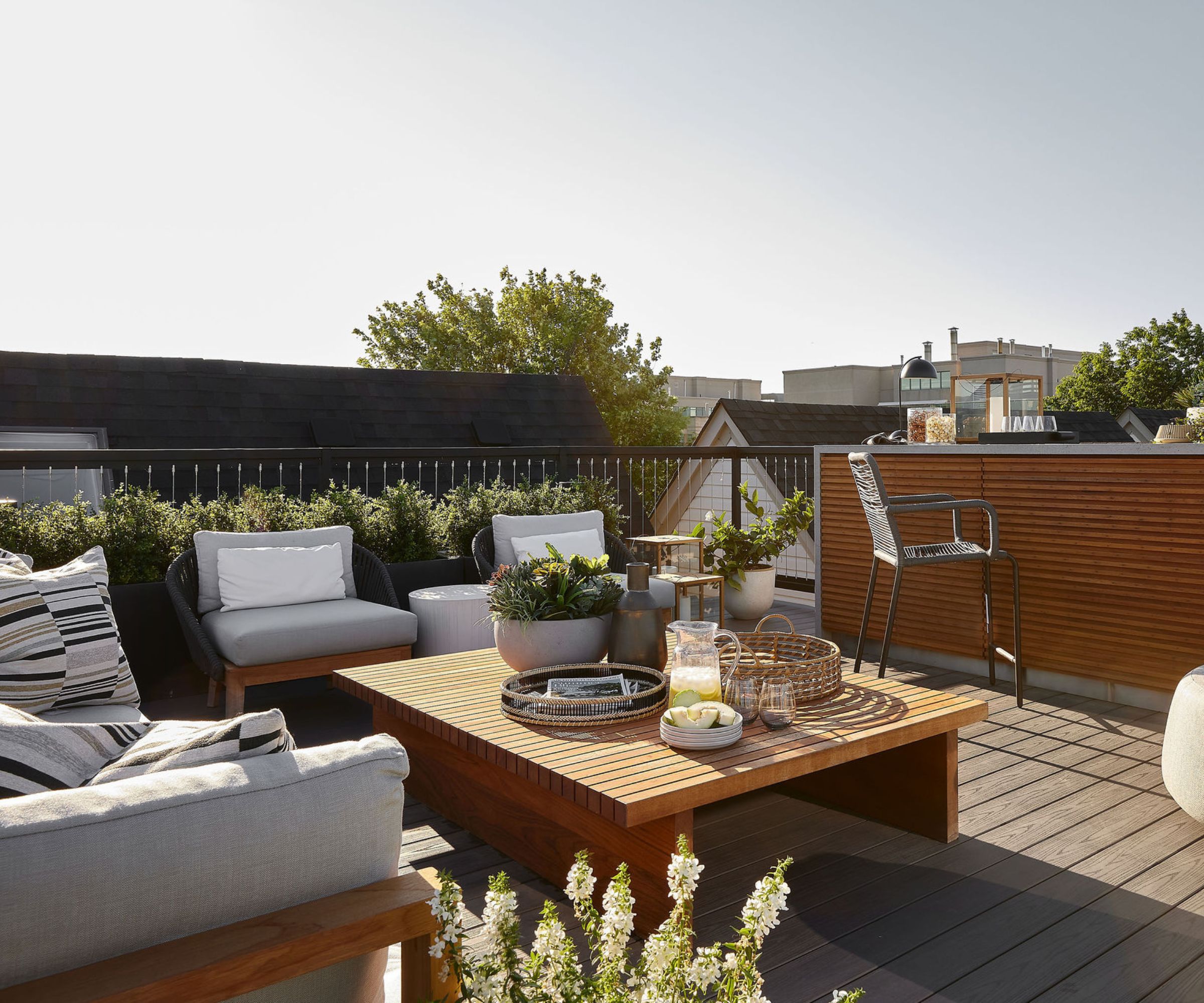
Don't forget that designing a house exterior and choosing its color scheme should also include outdoor seating ideas in the backyard, or in this case, up on the roof! These important spaces are where we spend our time with friends and family in good weather, and we want to relax there. This is where opting for neutral colors can be a strong choice.
Erin Hannon-Watkinson, founder of Studio Ha/Wa, who created this roof terrace, explains the firm's approach: 'We aim to create outdoor spaces that are calming and relaxing and that will stand the test of time in terms of longevity and design. A more neutral and monochromatic color scheme supports a more timeless space.
'Every project and location is unique; however, we typically stick with a more neutral and monochromatic color scheme for the architectural elements of the home, ie siding, fence pavers etc as well as the furniture upholstery. To create visual contrast, we include hints of black, whether that's windows and doors, railings, furniture or planters. To ensure an outdoor space doesn't feel too cold we always incorporate warm wood tones by using elements of teak furniture, or natural tones for the decking or considering the landscaping.'
We love the smart wooden framed garden furniture in this set-up, which, with its white cushions, keeps to the neutral scheme.
8. Take time looking for color inspiration in the local area before making a choice
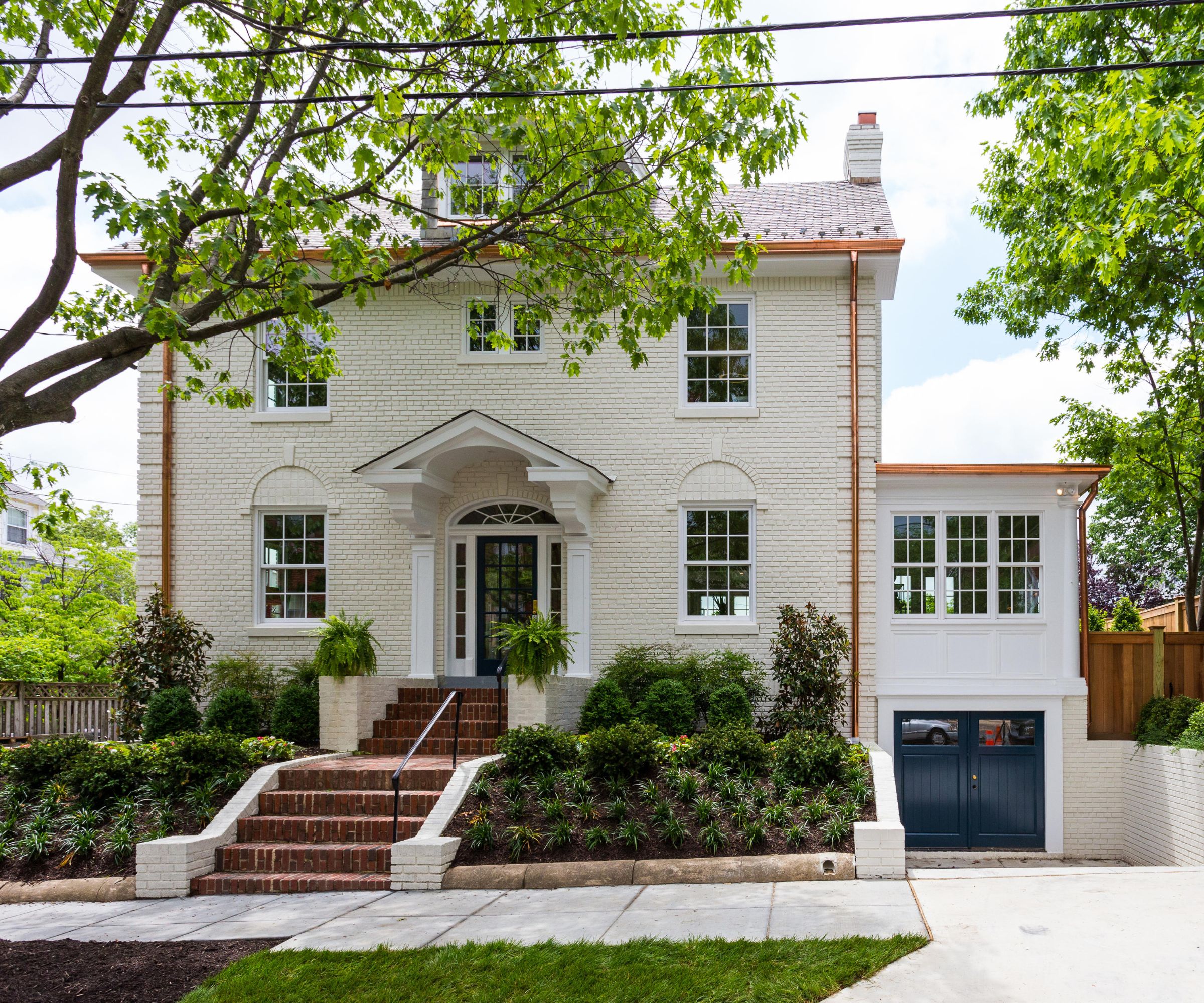
Time spent scouring the neighborhood for color inspiration is time well spent, particularly if you're planning to paint a large area of stucco or brickwork on exterior walls.
Seth Ballard, principal of Ballard + Mensua Architecture in Washington DC., agrees and sends all the firm's clients on color inspiration tours. 'Typically these will be areas with more historic homes and more variety and interest in house color,' says Seth. 'Sometimes we just direct our clients to these neighborhoods to take pictures and then based on their likes and taste, we can then guide them through options and add color to our renderings.
'We do tend to lean on the historic colors palettes of the different paint companies and find that because the paints were originally made from natural pigments these colors go better with the surrounding nature of the colonial states – because the colors come from nature,' he adds.
In this home in a historic Cleveland Park neighborhood of Washington DC, Ballard + Mensua painted the brick in Benjamin Moore's Revere Pewter to give it a patinaed look that still ties into the rest of the property, then added a color pop to the carriage house style garage door. 'To arrive at the color scheme, we toured Chevy Chase and Cleveland Park neighborhoods,' says Seth.
9. Choose exterior colors that look good in all seasons
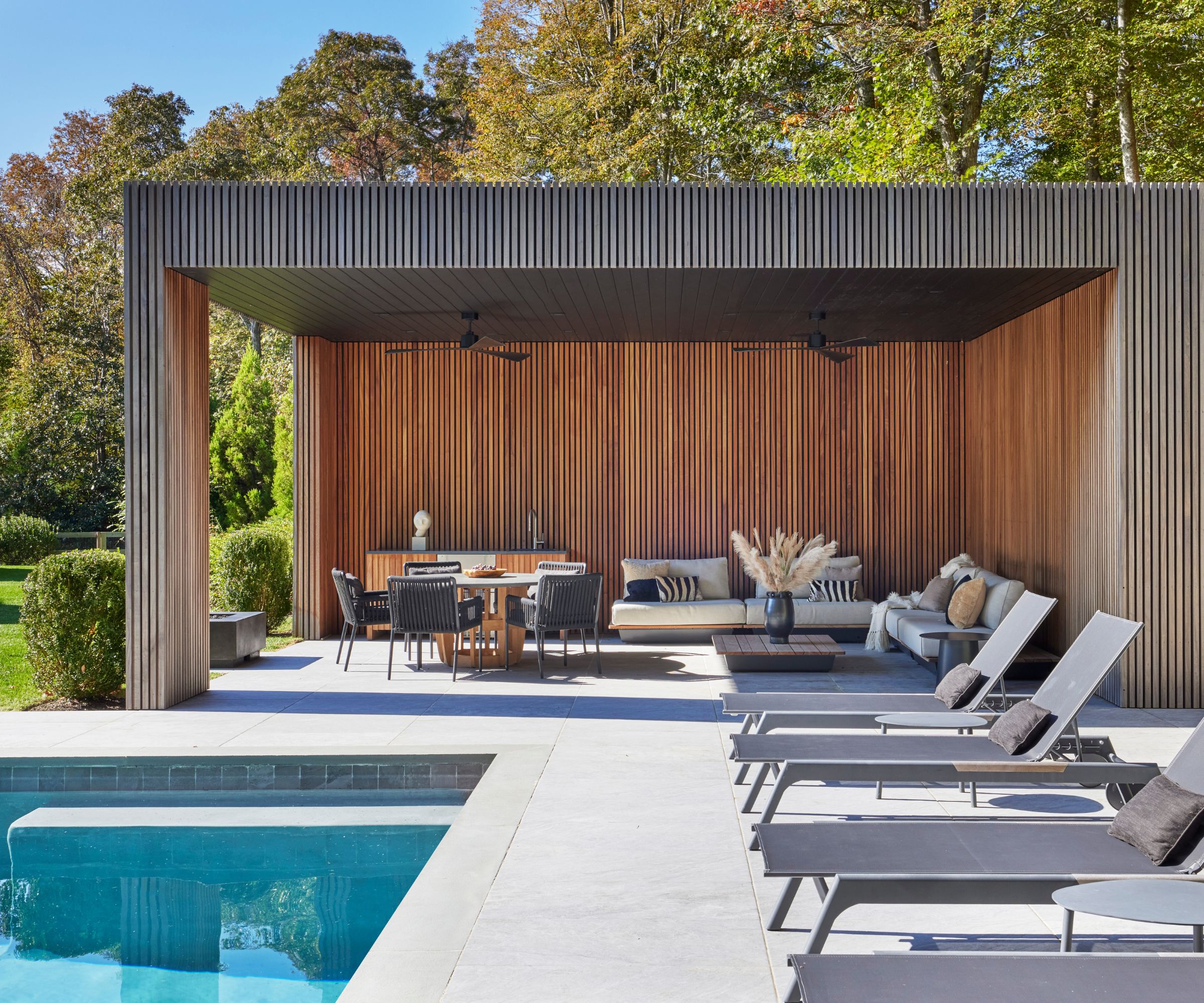
Think about how your exterior color choices will look all year round. The light quality changes from summer to winter, and other seasonal factors such as having more greenery around in spring and early summer will affect how the colors read. Interior designer Amy Kartheiser, who designed the Long Island house and came up with the pool house ideas, pictured above, is a real advocate for ensuring designs have multi-seasonal appeal.
'Make sure that your home's color schemes look good in all seasons by balancing warm and cool tones,' she says. 'A color that looks great in the summer needs to also be appealing in the winter.'
10. Use thoughtful planting and hard landscaping to refresh your home's exterior
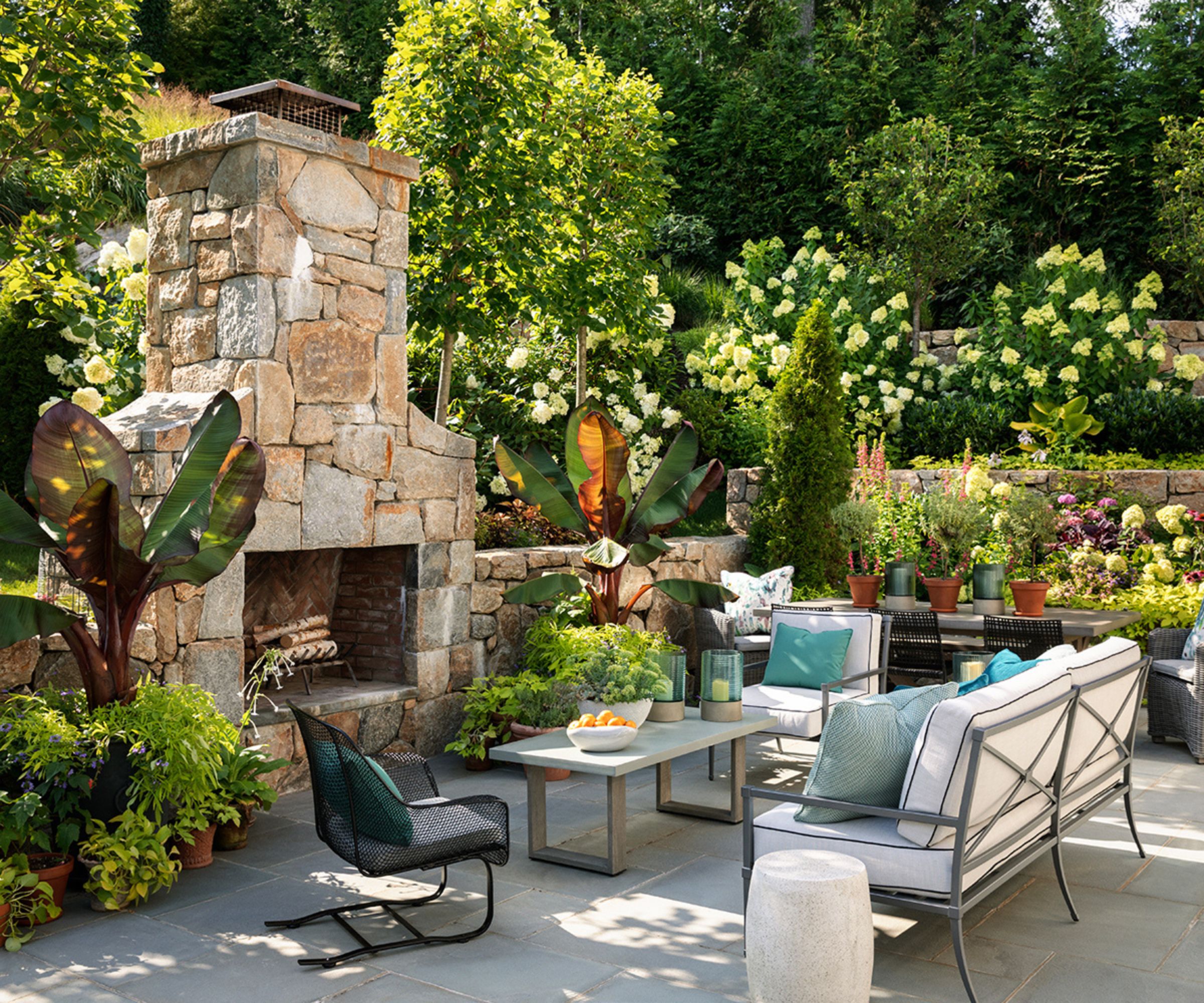
Whether you're simply sprucing up the front of your home with some colorful container gardening ideas, or redesigning and replanting the whole of your backyard, these are the details that can really bring your exterior color schemes together.
Erin Hannon-Watkinson agrees. 'Landscaping and planters are what add an injection of texture, greenery and color to an outdoor space and a must when we are designing an exterior environment,' says Erin. 'Layering planters and landscaping adds a softness and organic quality to balance the hard, architectural materials and finishes that are required on the exterior,'
Landscape architect Janice Parker, whose own patio is pictured above, wanted to create a series of garden rooms to create a flow through the garden. Planting and hard landscaping were equally important. 'Framing the stone stairs with pleached lindens created a green architectural separation between the lower patio and the lawn above. A potted columnar evergreen highlights the path to be taken, and the stone wall on the left creates a place to sit.'
Even if you're not redesigning the whole garden it's still possible to make a big impact with colorful plants in pots and containers. Look after container plants well, keeping them well watered and fed as plants can soon dry out when potted up. Dying plants in containers create a far worse first impression than no plants at all.
Choosing a color scheme for the exterior of your home should get as much time and attention as picking the colors on the inside. Don't look at anything in isolation, in order to create a cohesive exterior scheme you should be looking at every element of your outdoor space – the walls, the doors, the windows, the roof, any fences, any footpaths or driveways, plus the nature going on around too.
It's a big commitment painting your home, so one you want to get right. Hire experts to do the job and get them to test out different color swatches too before you make any final decisions.







